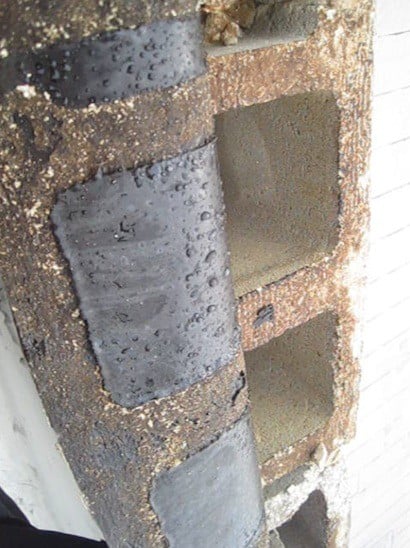Stories From the Field
- Scaffolding Saves the Day (09/20/21)
- Reputation for Honesty & Integrity (07/16/21)
- We Leave Your Masonry Restoration Project Debris Free (06/18/21)
- Window Lintel Replacement Work in East Lakeview (05/28/21)
- An On-going Commitment to Safety (04/24/21)
- AAA-1 Masonry Goes International (04/01/21)
- Quality Work That Will Last For Generations (12/10/20)
- The End of the Work Season Approaches (11/20/20)
- Exceptional Masons Produce Exceptional Masonry Work (09/24/20)
- Changing of the Season (03/08/20)
- The Seasonality of the Masonry Restoration Trades (12/20/19)
- AAA-1 Masonry In A Nutshell (11/20/19)
- No Project Too Big or Too Small (11/08/19)
- What Sets Us Apart (10/19/19)
- Heavy-Duty Vinyl Tarpaulins - An Affordable Means of Stopping Water Infiltration Through Your Masonry Walls (10/01/19)
- Glass Block Windows (06/12/19)
- The Impact of Our Erratic Spring Weather (05/10/19)
- Many (Skilled) Hands Make Light Work (04/19/19)
- Recipient of the 2018 Angie’s List Super Service Award (03/15/19)
- Prohibition-Era Building Materials (01/31/19)
- Recipient of the 2017 Angie’s List Super Service Award (02/01/18)
- Repairing Mortar Joints in Lakeview (08/27/17)
- What's That Haze On My Bricks? (08/15/17)
- Grinding & Tuckpointing (07/14/17)
- Some Thoughts About Safety (#5 in a Series) (03/15/17)
- Masonry Restoration Work & Cold Weather Considerations (#2 in a Series) (02/13/17)
- Masonry Restoration Work & Cold Weather Considerations (#1 in a Series) (01/20/17)
- An Industry In Growing Demand (12/20/16)
- Some Thoughts About Safety (#4 in a Series) (07/28/16)
- "High Quality" Masonry Sealers (06/20/16)
- Personal Protective Equipment (PPE) (05/18/16)
- Chimney Restoration in Hinsdale (04/30/16)
- Ask the Hard Questions (04/16/16)
- Masonry Restoration Case Study (04/06/16)
- Unique Flashing Detail (03/21/16)
- Valentine's Day Truth (02/14/16)
- Happy 30th Anniversary to Frank Kruk! (02/04/16)
- Some Thoughts About Safety (#3 in a Series) (01/20/16)
- Masonry Restoration at Second Church of Christ, Scientist (12/28/15)
- Expression of Gratitude (12/11/15)
- The Importance of Conducting Annual Inspections (11/25/15)
- Proper Site Protection Worth Every Cent (11/05/15)
- Former Dairy Undergoes Masonry Transformation (Part 2) (10/31/15)
- Unusual Brick Discovered (09/30/15)
- New Parapet Wall Project in East Ravenswood (09/16/15)
- Former Dairy Undergoes Masonry Transformation (Part 1) (07/14/15)
- Some Thoughts About Safety (#2 In a Series) (07/02/15)
- Some Thoughts About Safety (#1 In a Series) (06/29/15)
- Enduring Masonry in Oak Park (06/20/15)
- Whatever the Job Requires! (06/15/15)
- Residential Chimney Project in Glencoe (06/02/15)
- AAA-1 Masonry & Tuckpointing is Your Restoration Company (05/09/15)
- Restoring Fourth Presbyterian Church's Historic Fountain (04/06/15)
- Water Leaks – Sound Familiar? (01/15/15)
- Some Thoughts About Safety & Insurance (12/11/14)
- Why Temperature Matters At This Time of Year (11/11/14)
- Kudos to Frank Kruk (09/15/14)
- Counting My Blessings! (07/31/14)
- Your Brick Structure Can Last Another 100+ Years with Preventative Maintenance (07/08/14)
- Masons Are Like Farmers (06/13/14)
- Look Up! (05/28/14)
- Bring Your Child to Work Day (04/24/14)
- AAA-1 Masonry & Tuckpointing Receives BBB's 2013 Complaint-Free Award (02/28/14)
- Heavy Duty Tarps: Effective, Durable Solution for Winter Leaks (02/18/14)
- Why Weather Matters (01/27/14)
- A Few Thoughts About Quality (12/10/13)
- If You Build It Right the First Time... (09/01/12)
- More Common Than You Think (07/06/12)
- Flashing or Through-Wall Flashing (05/05/12)
- Extensive Edison Park Office Project (Underway) (04/24/11)
- Wright Chimney Restoration (03/15/11)
- Lincoln Park Residential Restoration (09/09/10)
- Critical Facade Inspection Work (08/15/10)
- Residential Chimney Rebuild (07/01/10)
- Vehicular Impact With Building (07/20/09)
- Taken For A Ride (06/15/09)
- Chronic Water Damage (05/10/09)
- Brick Wall Repair (11/15/08)
Stories From the Field
Post: If You Build It Right the First Time...
Saturday September 1, 2012

On almost a daily basis, AAA-1 Masonry & Tuckpointing receives calls from owners of newly constructed homes and buildings (i.e., structures built with concrete block or split-face block walls within the last 15 years) complaining of water leaks.
Because concrete blocks are mostly hollow and are so much more porous than bricks found in older structures, wind-driven rain usually blows right through the block walls and into the wall cavity. To limit the damage due to water infiltration through block walls, waterproof membranes are usually installed at each floor in a multi-story building and at the top of the parapet wall. Unfortunately, improperly installed flashings are very, very common in new construction dwellings and fail to stop water infiltration. That's why we see water marks on ceilings, and around balcony doors and windows in so many newer homes and apartments. Water infiltrations through concrete block walls short out electrical wiring, and burn out light switches and outlets, and are a real fire hazard. At a project in West Town (see photos), we pulled back a parapet wall's improperly installed flashing to discover water all over the underside of the material it was designed to repel. No wonder the block's hollow cells were soaked and the paint on the owners' bedroom walls were peeling!
Only when concrete block cells are grout-filled solid, and drip edges and membranes are sized properly and installed correctly can one be assured of a water-resistant flashing detail. All of AAA-1 Masonry's licensed masons know this. That's why after hundreds of parapet wall flashing installations we can boast a 99% success rate stopping water infiltration.
